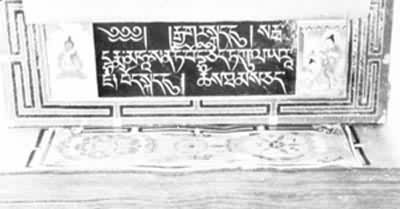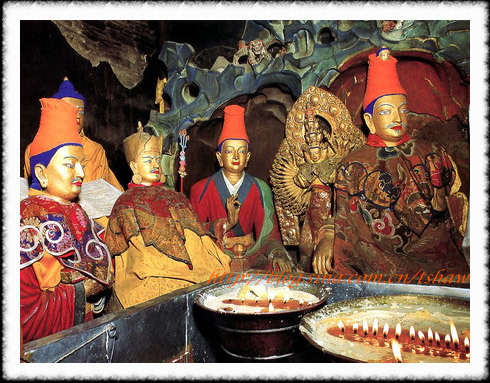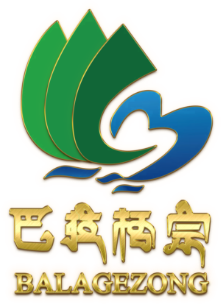Hello, welcome to the official website of Yunnan Shangri-La Balagezong Tourism Development Co., Ltd!

02
2015
-
12
Father of Tibetan-Tunmi Sambuza
作者:
Tunmi Sambuza was a great early Tibetan society linguist, translator, the first master of Buddhist dissemination and the enlightenment of Songtsang Ganbu. His name and his immortal achievements will be forever in history and admired by future generations.

During the 7th century AD, Tunmi Sambuza was born in the Tunmi family of Tunbaigou (now Nimu County) in the upper reaches of the Yarlung Zangbo River. His father, Tun Mi'alu, was both an eminent monk of the Bon religion and a former minister of the Tubo Zanpu Songtsen Gampo. Mother's name is Ah.
Tunmi Sambuza has been clever and intelligent since she was a child. At the age of thirteen, he was recalled to the palace by Songzan Ganbo, and the next year he was officially made a minister by Songzan Ganbo. At that time, 16 smart and handsome young people, including Tunmi Sambuza, were selected to go to India to learn Sanskrit and Tianzhu characters.
"Tunmi and others passed through Yangbu (near Kathmandu, now the capital of Nepal), the land of Nippon. King Yang of Bani Borneo lost to King Varmo, for which the king gave drugs to relieve summer heat." However, the tropical climate of Tianzhu made it difficult for 16 young people who lived in the cold plateau for a long time to adapt. Most of them died of illness in other places. Only Tunmi Sambuza learned Sanskrit and language from a Brahmin named Li Jing (also translated as Li Jin, Li Jin or Li Bin) and a scholar named La Rebeksenge. He successfully completed seven years of studies. He respected Buddhism, studied hard, and achieved excellent results. Therefore, he was called "Sangbuza" by Tianzhu people (meaning a virtuous Tibetan, "Tunmi" is his family name).
Tunmi Sambuza returned to Tubo with the affectionate kindness of his teachers and his knowledge and understanding of Sanskrit. In accordance with Songtsen Gampo's wishes, he took the 50 basic letters of Sanskrit as a model and combined with the characteristics of the Tibetan language to create 30 basic letters of Tibetan; he also created 4 Tibetan vowels from the 16 vowels of Sanskrit. Tunmi also removed 5 reverse characters and 5 overlapping characters from 34 Sanskrit consonant characters, added vowel ah characters to vowels, and added 6 Sanskrit words such as Jia, Qia, Jia, Xia, what, A (transliteration), etc., to work out Tibetan with 4 vowels and 30 consonant characters.
According to historical records, after Tunmi created the Tibetan language, he made a Tibetan tribute to Songtsen Gampo. Zanpu was very happy and appreciated it. In order to drive his subjects to learn Tibetan, Zanpu worshipped him as a teacher. In Grandmother Rub (now more than 10 kilometers east of Dazi County, Lhasa City, Tibet, the palace of the Tibetan queen of Songtsen Gampo), I studied Tibetan and other cultures with great concentration, without contact with the outside world, and studied behind closed doors. Songtsen Gambo highly respects Tunmi, while some ministers think it should not be so respected. Tunmi said, "I am the first resident in snowy land." As a result, the anger of the public subsided, the upper and lower people learned Tibetan, and the lotus of wisdom flourished. In Tubo, politicians, military strategists and proficient construction talents such as Gaer Dongzan, Gaer Qinling and Minister Nian Chi Sangyangdun appeared. Later, in order to correctly use the Tibetan pinyin method, rules and the imaginary character "ge", Tunmi Sambuza compiled the "Thirty Odes to the Fundamentals of Grammar" based on ancient Indian statements and the characteristics and methods of the Tibetan language he created, so that the Tibetan people had their own national language for the first time. With the continuous emergence of writings and translations in Tibetan, Tibetan history has entered a new stage of civilization.

Tounmi Sambuza is not only creative and unique in Tibetan language and grammar, but also a translator. At the same time, he personally led the disciples of Songtsan Gampo to practice Buddhism in Pabangka for three years. In addition to eight linguistic and grammatical works, he wrote the Thirty Odes and the Wheel of Phase (I. e., Thirty Odes to the Fundamental Grammar), the Law of Character Change, and the Wind of Tunmi Valley (I. e., Gender Usage of Grammar) in the Dharma Caves of the Dharma Caves of Tibet, he also translated more than 20 kinds of Buddhist scriptures, such as "21 Secret Classics", "Baoxing Dharani Sutra", "Ten Good Sutra", "Prajna Hundred Thousand Odes", "Baoyun Sutra" and "Baoqing Sutra. These translations were included in the "Great Tibetan Sutra-Ganjul", and Buddhist classics and various cultural treatises from Tianzhu, Handi, Neborah, Keshi Milo, Hetian and other places were translated into Tibetan and digested and integrated to form a well-known Tibetan culture.
Up to now, many cultural relics left over from that time and six-character mantra engraved on boulders can still be seen in the Buddhist monastery cave and Pabongka temple. Historical records show that this is the authentic legacy of Songtsang Ganbu and Tunmi Sambuza's joint study and practice.
Later, Tunmi Sambuza assisted Songtsang Ganbu to complete the great cause of cultural diversity and common prosperity in Tibet. He traveled thousands of miles to Nepal, Chang'an (now Xi'an) and other regions to marry Princess Nepal and Princess Wencheng, thus speeding up the development of Tibet and neighboring countries. The pace of harmonious coexistence.

最新动态
2022-08-23
The current outbreak, the responsibility is on the shoulder, Balagzon in action!
Since the outbreak of the epidemic in Tibet on August 7, 2022, a large number of tourists from Tibet to Yunnan have entered Shangri-La from National Highway 214. The People's Government of Diqing Prefecture has issued a series of relevant policies and measures and actively responded. Medical staff, police and other front-line personnel stick to the front line, have been involved in the "war of resistance" of the epidemic without gunpowder smoke, and jointly participate in dealing with a major public health security incident faced by mankind.



